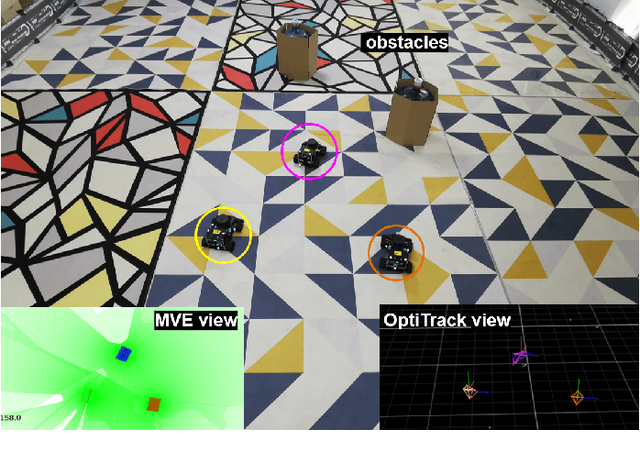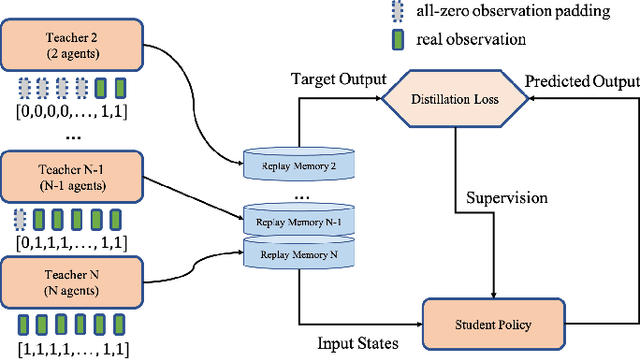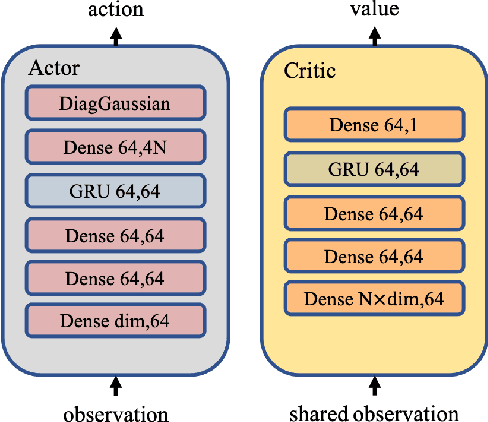Xinyou Qiu
Relative Distributed Formation and Obstacle Avoidance with Multi-agent Reinforcement Learning
Nov 14, 2021



Abstract:Multi-agent formation as well as obstacle avoidance is one of the most actively studied topics in the field of multi-agent systems. Although some classic controllers like model predictive control (MPC) and fuzzy control achieve a certain measure of success, most of them require precise global information which is not accessible in harsh environments. On the other hand, some reinforcement learning (RL) based approaches adopt the leader-follower structure to organize different agents' behaviors, which sacrifices the collaboration between agents thus suffering from bottlenecks in maneuverability and robustness. In this paper, we propose a distributed formation and obstacle avoidance method based on multi-agent reinforcement learning (MARL). Agents in our system only utilize local and relative information to make decisions and control themselves distributively. Agent in the multi-agent system will reorganize themselves into a new topology quickly in case that any of them is disconnected. Our method achieves better performance regarding formation error, formation convergence rate and on-par success rate of obstacle avoidance compared with baselines (both classic control methods and another RL-based method). The feasibility of our method is verified by both simulation and hardware implementation with Ackermann-steering vehicles.
A drl based distributed formation control scheme with stream based collision avoidance
Sep 05, 2021



Abstract:Formation and collision avoidance abilities are essential for multi-agent systems. Conventional methods usually require a central controller and global information to achieve collaboration, which is impractical in an unknown environment. In this paper, we propose a deep reinforcement learning (DRL) based distributed formation control scheme for autonomous vehicles. A modified stream-based obstacle avoidance method is applied to smoothen the optimal trajectory, and onboard sensors such as Lidar and antenna arrays are used to obtain local relative distance and angle information. The proposed scheme obtains a scalable distributed control policy which jointly optimizes formation tracking error and average collision rate with local observations. Simulation results demonstrate that our method outperforms two other state-of-the-art algorithms on maintaining formation and collision avoidance.
 Add to Chrome
Add to Chrome Add to Firefox
Add to Firefox Add to Edge
Add to Edge